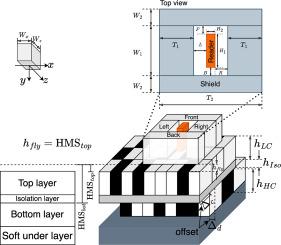On the impact of interlayer misalignment for dual-layer data detection in three dimensional magnetic recording
Abstract
Three-dimensional magnetic recording (3DMR) is a crucial technology for significantly increasing the storage capacity of hard disk drives (HDDs). However, the presence of inter-symbol interference (ISI), intertrack interference (ITI), and interlayer interference (ILI) poses significant challenges to the accurate detection of data stored on multiple layers. This study addresses the impact of interlayer misalignment on the bit error rate (BER) performance in 3DMR systems. We evaluate the performance based on a neural network estimator for reconstructing the top-layer read response signal using feedback from a Viterbi detector. This enables the separation of bottom-layer signals by subtraction from the mixed readback signal. We introduce a dual-layer partial response maximum likelihood (PRML) detector for simultaneous bit retrieval from both layers. Furthermore, we investigate methods of a per-layer binary classifier and a dual-layer four-class classifier based on neural networks. Our study demonstrates the BER performance of these detection schemes influenced by the interlayer misalignment, especially when the offset is 0, 10%, 50%, and 90% of the bit dimensions between the two layers. The results show that the neural network-based reconstruction and separation method achieves better bottom-layer BER performance under a slight interlayer misalignment. The BER performance benefits more from a mild downtrack offset than the crosstrack offset. The neural network-based separation detection and the dual-layer PRML achieve the lowest top-layer BER and the worst bottom-layer BER when the interlayer misalignment is half a bit.


 求助内容:
求助内容: 应助结果提醒方式:
应助结果提醒方式:


